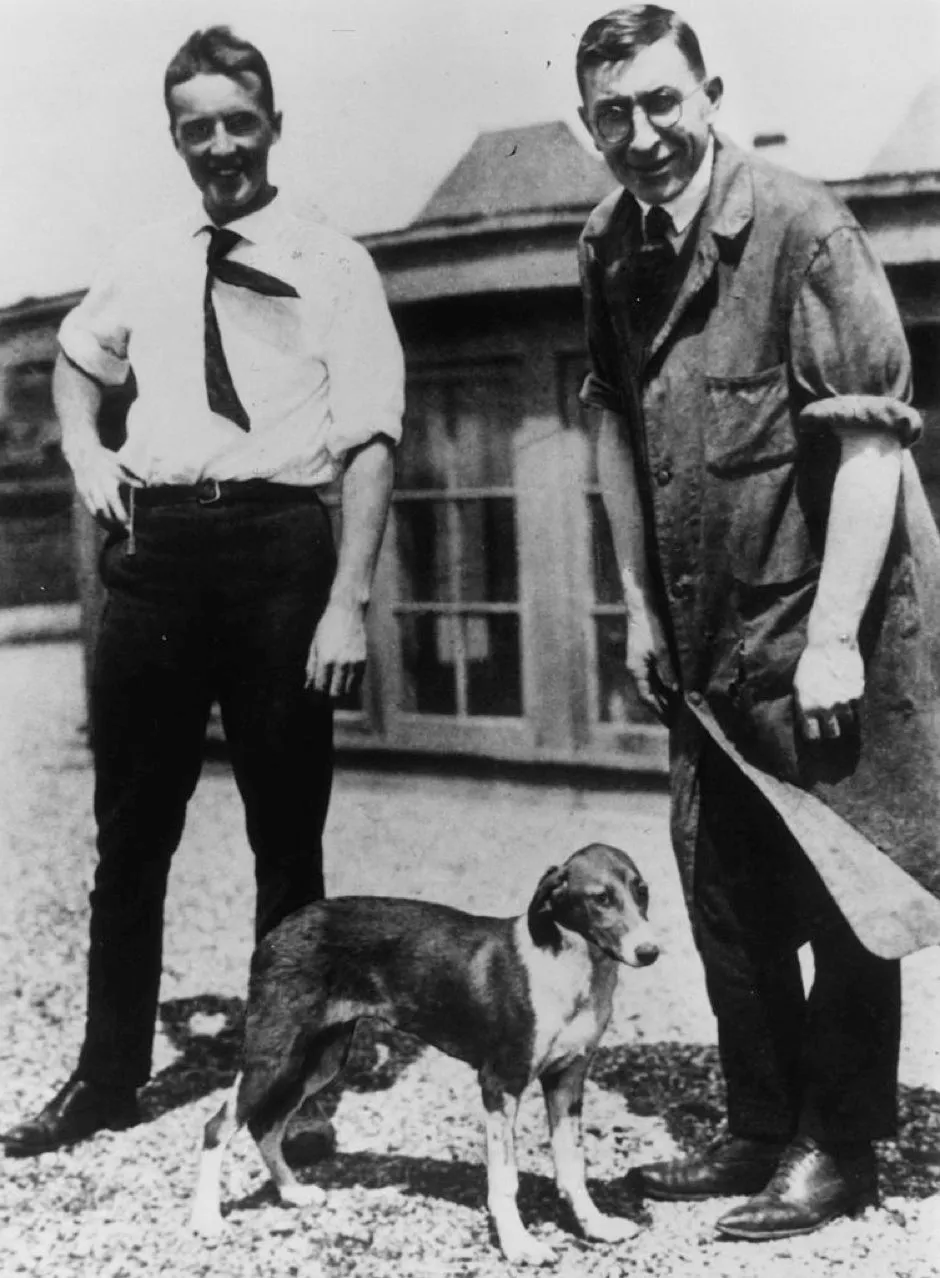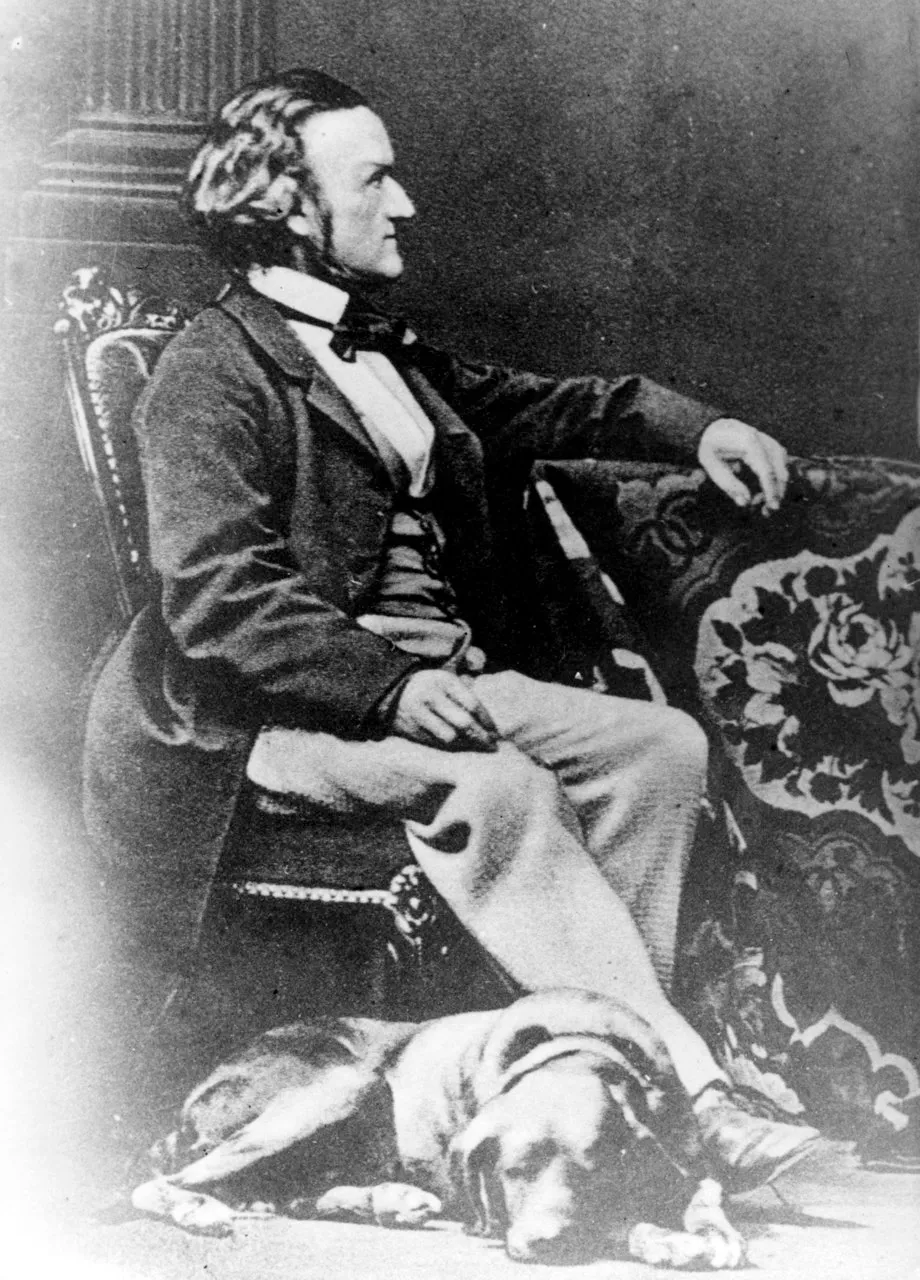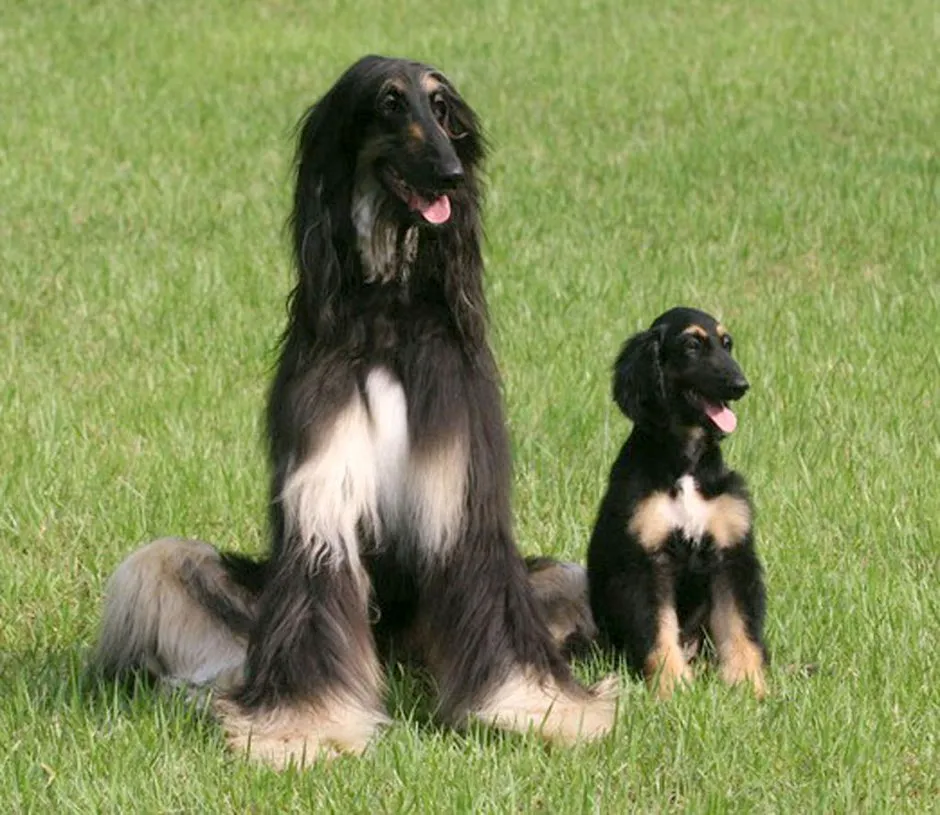We’ve all heard it said that dogs are ‘man’s best friend’, but it turns out they also make excellent lab assistants.
Throughout the history of science, there are a few famous dogs that have made a name for themselves, but there are many more that deserve their moment in the canine hall of fame. Here are just a few of those good boys and girls.
1
Milka – the dog who helped invent Velcro
While on holiday one day in 1941, Swiss engineer and inventor, George de Mestral decided to take his dog, Milka, for a walk in the Jura Mountains. The Irish Pointer returned from the trip covered in prickly burrs from a burdock plant.
Intrigued by these bothersome seed pods that had tangled themselves in Milka’s coat, de Mestral decided to examine them under a microscope. He found that hundreds of tiny, stiff hooks covered the exterior of the burrs, which had grabbed onto the loops of Milka’s fur.
Inspired by this discovery, he went on to develop the synthetic fastening system, which he called Velcro.
Read the latest dog news:
2
Snuppy – the first cloned dog
On the 24 April 2005, Snuppy, an Afghan hound, became the world’s first cloned dog.
South Korean scientists used a revolutionary method of somatic cell nuclear transfer, where the nucleus of a body cell – in this case, taken from the ear of the to-be-cloned dog – is injected into the cytoplasm of an egg with its nucleus removed.
Electricity fuses the egg and nucleus and stimulates cell division, forming an embryo. This embryo is then implanted into the surrogate mother – a Labrador retriever in Snuppy’s case – who raises the puppy to term.
Following the successful cloning of Dolly the sheep in 1996, unique aspects of the canid reproductive system had, until this point, caused challenges for scientists. Not only were the eggs of dogs much harder to extract than other animals due to their limited breeding window, but once extracted, the eggs remained mature for only a few hours.
It took scientists 1,095 embryos, surgically transferred to 123 surrogate dogs, before Snuppy was born.
3
Marjorie – the diabetic dog who helped isolate insulin

Prior to 1922, being diagnosed with type 1 diabetes meant you had a slim chance of survival. The condition was not well understood and the cause much less so.
Canadian physician Dr Frederick Banting together with his assistant Dr Charles Best, hypothesized that the pancreas was somehow involved. And they were right.
Marjorie the dog, developed diabetic-like symptoms a few days after her pancreas was removed. By injecting her with a purified extract from other pancreases, they found that her blood sugar levels fell back to healthy levels.
Although the substance was crude by today’s standards, the scientists had isolated insulin, and Banting, along with his colleague John Macleod, subsequently won the Nobel prize in Medicine in 1923 for their discovery, which they shared with Best.
Discover more about pets:
4
Naki’o – the Bionic dog
Abandoned as a puppy, Naki’o lost all four paws to frostbite during a harsh winter of the US state Nebraska. He was found in the icy cellar of an abandoned home and taken to a rescue centre when veterinarian assistant Christie Pace decided she could give him a second chance at life.
Naki’o became the first dog to be fitted with four prosthetic limbs, a feat achieved by US company OrthoPets, and was dubbed ‘The Bionic Dog’. Naki’o’s artificial limbs mimic the muscle and bone of his original limbs, and the pioneering surgery allowed him to run, bound and even play fetch.
Animal prosthetics has revolutionised veterinary medicine, and advances in the industry have seen many different species receiving prosthesis, including Mosha the elephant and her prosthetic leg, and Beauty the bald eagle and her 3d printed prosthetic beak.
5
Sergeant Stubby – the dog of war

America’s first war dog, and the official mascot of the 102nd Infantry Regiment (United States), Stubby, started off life as a stray. That is, until one day, he decided to show up at training drills in July 1917.
He developed a particular affection for Corporal James Robert Conroy, who subsequently smuggled Stubby on board his troop’s ship, bound for France. When Conroy’s commander discovered the stowaway, Stubby respectfully saluted the commander – as he had been trained – and was allowed to stay.
He went on to serve in the trenches of France alongside his troop during WWI. In his first year of service, Stubby was wounded by both hand grenades and mustard gas, but the plucky pooch survived.
Returning to service with a specially designed gas mask, his keen senses were able to recognise the smell of poison gas and the whine of incoming artillery shells before they hit, and dutifully alerted his unit to the danger.
During his career, he also located wounded soldiers in no man’s land, but it was his successful capture of a German spy that led to his promotion to Sergeant.
Stubby survived the war and returned to America as a hero.
6
Smoky – the first therapy dog
The calming effect of dogs has been well-documented over the years. As history recalls, President John F Kennedy sat stroking his Welsh Terrior, Charlie, while he mulled over his options during the Cuban Missile Crisis in 1962.
Those present at the time, say Charlie’s presence in the tension-filled War Room allowed the President to relax, and he was ultimately able to make the decisions which de-escalated the crisis.
But it was Smoky, a tiny Yorkshire Terrier, who is officially recognised as being the world’s first therapy dog. When her owner, Corporal William Wynne was admitted to hospital with dengue fever in 1944, the nurses noticed the remarkable healing presence that Smoky had, not only on Wynne, but other wounded soldiers, too.
Commanding Officer, Dr Charles Mayo, allowed Smoky to remain – as she had been smuggled into the hospital – and as a result, Smoky continued as a therapy dog for 12 years, paving the way for hospital therapy dogs today.
7
Pavlov’s dogs – the dogs who developed classical conditioning

At the turn of the 20th Century, Russian physiologist Ivan Pavlov had already made a name for himself researching the physiology of digestion.
His attention turned to dogs, and he realised they exhibited a reflexive behaviour, producing a response when a stimulus was presented. That is, they drooled in anticipation of some tasty meat upon seeing the technician who usually fed them.
He dubbed it a “psychic secretion”, which he collected via an external salivary gland – a surgically implanted cannula – so that he could test his theory under different conditions.
Pavlov experimented with different types of stimulus – such as metronome and buzzer – while presenting his pooches with food. He found that after just a few repetitions, the dogs learned to associate the stimulus with the food and began salivating on hearing the stimulus.
Pavlov’s principles became known as classical conditioning and are widely used to this day in a variety of behaviour therapies.
8
Peps – the dog who could understand music

The Ride of the Valkyries is one the best-known pieces in German composer Richard Wagner’s canon. But did you know that his beloved pooch, a Cavalier King Charles spaniel called Peps, helped to compose it?
The faithful companion would sit on a special stool in his study while Wagner serenaded him with passages of music. He noticed that the little dog would react differently to melodies based on their musical key and would modify the musical phrases accordingly. Certain compositions would elicit an excited response, while others resulted in a calmer tail wag.
This led to Wagner developing his “musical motif” – or “leitmotif” as it would later become known – the association of a particular musical key or short musical phrase with certain emotions, ideas, people or places.
9
Laika – the dog who orbited the Earth

Laika, a stray from the streets of Moscow, made history in 1957 when she became the first dog to orbit the Earth (although she wasn’t the first animal in space).
At the time, very little was known about the effects of space travel on a living being, and strays were in plentiful supply. Before they could launch humans into space, scientists needed to know how prolonged exposure to zero-g would affect the body, and being a stray, it was assumed that Laika had already learned to tolerate harsh conditions.
The mission was always intended to be a one-way trip, but her death on board the Soviet spacecraft Sputnik 2 sparked a global debate on the ethics of animal testing, and her legacy can be seen today in popular culture.
Read more about animals in space:
BONUS DOG: Robot – the dog who discovered our ancient history

Sometimes dogs help rewrite our knowledge of history, simply by being dogs. And that is exactly what happened in 1940 when Robot, out walking with his owner Marcel Ravidot in the Dordogne region of France, disappeared down a hole, allegedly chasing a rabbit.
But this was no rabbit hole. In fact, Robot had stumbled upon the Lascaux Cave, the walls of which were covered in some 600 paintings and 1500 engravings. Estimated to be 17,000 years old, the paintings depict large animals once native to the region, including bison, rhinoceros, aurochs and lions, as well as what appear to be mythical animals.
Preserved over the millennia by a rockfall that sealed off the entrance, the paintings have been hailed as some of the finest examples of European Palaeolithic cave art. Archaeologists believe the site once served as a centre for hunting and religion.
Whether Robot ever existed, is up for debate, as there are those who attribute the caves find instead to the innate curiosity of schoolboys. None-the-less, Robot has made a name for himself as the dog who rewrote prehistory.
Dogs of science today
Throughout the history of science, these famous dogs have taught us a thing or two about the world around us and the bodies we live, but their contribution to the sciences doesn’t end there.
In fact, dogs are pushing the boundaries of scientific research to this very day, helping us live longer, build better robots, understand relationships and sniff out diseases like lung cancer, diabetes, even COVID-19.


